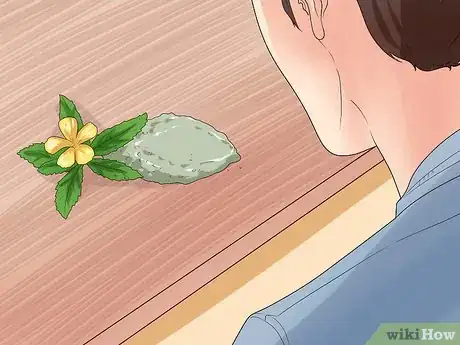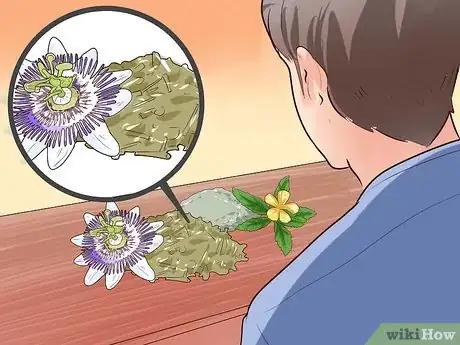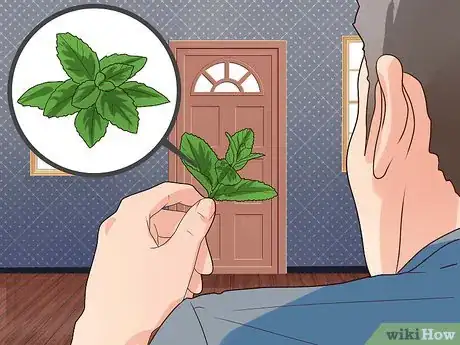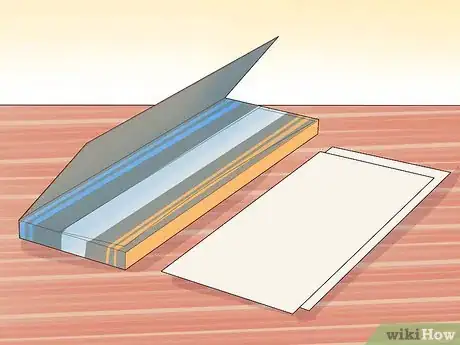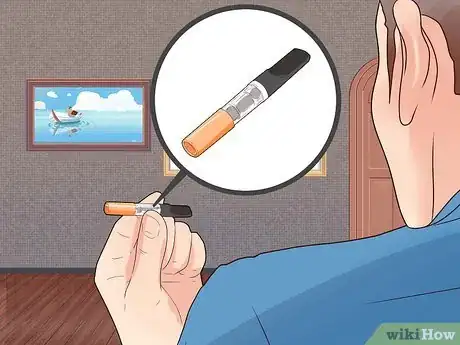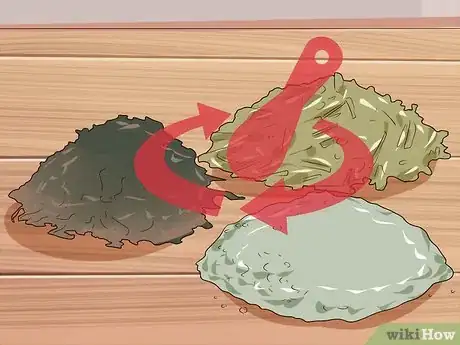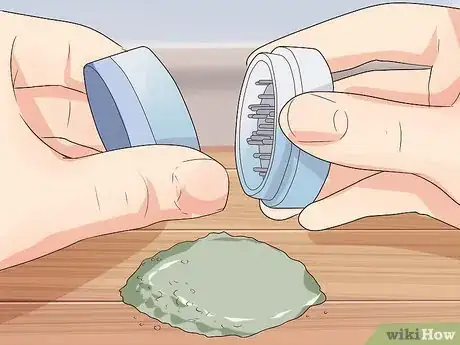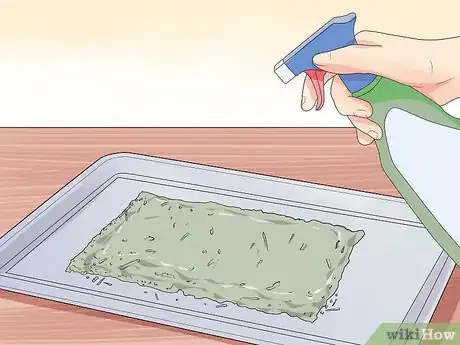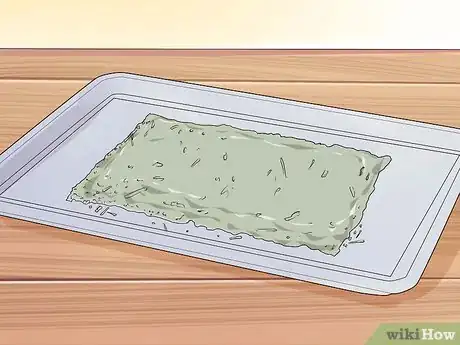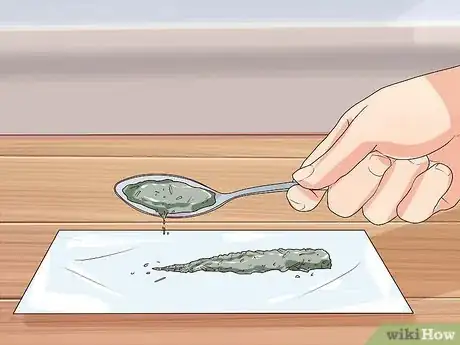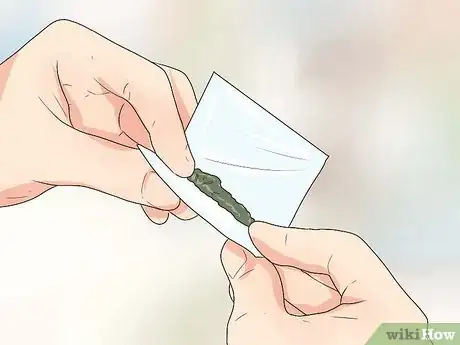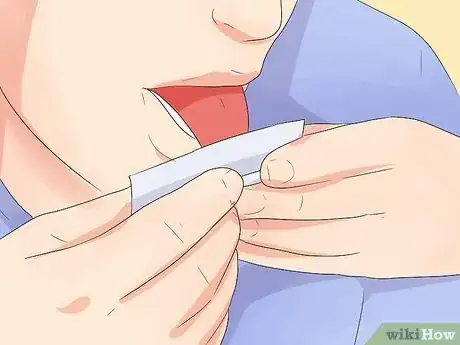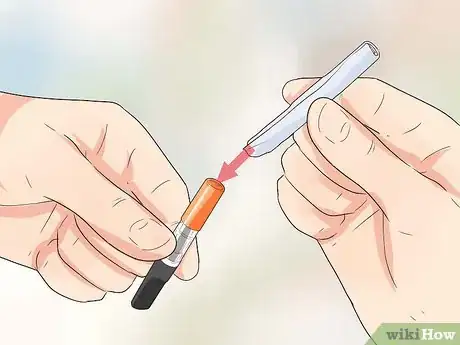This article was co-authored by wikiHow Staff. Our trained team of editors and researchers validate articles for accuracy and comprehensiveness. wikiHow's Content Management Team carefully monitors the work from our editorial staff to ensure that each article is backed by trusted research and meets our high quality standards.
wikiHow marks an article as reader-approved once it receives enough positive feedback. In this case, 85% of readers who voted found the article helpful, earning it our reader-approved status.
This article has been viewed 577,775 times.
Learn more...
Herbal cigarettes are cigarettes that don’t contain tobacco or nicotine, and are made up of herbs, spices, and botanicals. Because there’s no tobacco or nicotine, herbal cigarettes aren’t addictive, and if you make them at home, you can control exactly what goes into them. There are many herbs and herb combinations you can use, giving you many possibilities in terms of flavor and aroma for your herbal cigarettes. Although many herbal cigarettes are marketed as “natural” or “healthier,” it’s very important to realize that herbal cigarettes are not healthy or good for your lungs, and there’s no such thing as a safe or healthy cigarette.
Steps
Selecting Your Tools and Ingredients
-
1Choose your herb base. Herbal cigarettes are often blends made up of base herbs, secondary herbs, and flavoring herbs. Always choose or pick pesticide-free herbs when possible. Your base herbs should account for 50 percent of the total herb blend. For base herbs, try full-bodied, smooth herbs like:
-
2Select your secondary herbs. These will make up about 33 percent of your overall herb blend. There are many herbs you can choose from, and it’s best to play around with the quantities and herbs until you find a recipe that you like. Consider keeping a journal so that when you make a new blend, you can keep track of the ingredients, quantities, and how it turned out. Secondary herbs can include:
- Blue lotus
- Skullcap
- California poppy, catnip, and chamomile
- Passionflower
- Uva Ursi
- Hops
- Thyme
- Lobelia (be warned that this can induce vomiting[3] )
- Marigold, Marshmallow, Marjoram, and Mugwort
- Wild dagga and wild lettuce
-
3Choose flavoring herbs and spices. The herbs that go into this component of your cigarette blend tend to be more potent and flavorful, so they only account for about 17 percent of the blend. Popular flavoring herbs and spices for herbal cigarettes include:
-
4Choose your rolling papers. Look for papers that are raw or as natural as possible: any chemicals or additives in the paper will be burned and inhaled into your lungs. Especially avoid papers that have been bleached or have ink on them. Aside from regular paper, you can also find smoking papers made of flax, rice, and hemp.
- If you find hand rolling cigarettes difficult, consider a cigarette roller that helps you shape and pack the herbs. You can use this in conjunction with pre-rolled cigarette tubes,[6] which come in many varieties, including filtered, without filters, and even mentholated.
-
5Choose your filter. Not everybody uses filters for their cigarettes, but there are items available that will filter your smoke. If you are using ready-made cigarette tubes, you can purchase these with a filter on them already. You can also buy reusable filters, or disposable filters that are used with one cigarette.
Preparing Your Herbs
-
1Dry your herbs. Instead of purchasing dried herbs for your cigarettes, you can pick or collect fresh herbs and dry them. This is good because it allows you to control how dry the herbs are (for smoking, you don’t want your herbs so dry that they’re crispy). Tie your herbs in small bundles using twist ties, elastic bands, string, or thread, and hang them upside down for a couple days until they are mostly (but not completely) dry.
- For faster drying, spread the herbs out in a single layer on a cookie sheet, set your oven to the lowest temperature, and dry the herbs in the oven. Keep a close eye on them. You can also use a dehydrator to prepare your herbs.
- When your herbs are dry, remove any stems, roots, or small twigs that could poke holes in your paper.[7]
-
2Blend your herbs. One ounce (28.3 grams) of herbs will yield anywhere from 24 to 40 cigarettes, depending on how large you make each cigarette.To make larger batches of herb blends, just remember that you want three parts base herb, two parts secondary herb, and one part flavoring herb. To make a one-ounce batch that will roll 24 to 40 cigarettes, combine in a medium-sized bowl:
- Half an ounce (14.1 grams) of base herbs
- About one-third ounce (9.4 grams) of secondary herbs
- About one-sixth ounce (4.7 grams) of flavoring herbs
-
3Grind the herb blend. Mix the herbs with your fingers to mix them together, make them fluffy, and help break up any large bunches.[8] Transfer the blend to a grinder or clean coffee grinder and grind it into a course powder. Make sure you stop when it’s still course, as you don’t want the herb powder being too fine.
- Use a pestle and mortar if you don’t have a grinder or coffee grinder.
-
4Add moisture if you’re using pre-dried herbs. If you bought herbs from a store and they were already dry, you will need to add some moisture back so they burn properly.[9] Take your herb batch and spread it out in a thin layer on a cookie sheet, large plate, or parchment paper. Using a mister and clean water, spray a small amount of water over the herbs so that the entire mixture is slightly moist.
- To prevent mold growth, only add moisture to the portion of herb blend that you are rolling immediately. If you’ve made a larger batch, separate and moisten what you need for immediate use and store the rest in an airtight container.
-
5Let the herb blend air dry for a couple hours. When it has had time to dry and the overall consistency of the herb mixture is mostly dry but with some moisture, then it is ready to roll.
Rolling Your Herbal Cigarettes
-
1Lay out the herbs on the rolling paper. Lay a single paper out on a flat surface. Use your fingers or a spoon to evenly spread the herbs over the center of the paper. For a smaller cigarette, use about 0.025 ounces (0.7 grams) of herbs; for a larger cigarette, use about 0.04 ounces (1.1 grams).
- If you are using a cigarette roller instead of rolling by hand, pack your herbs into the filling tray.
-
2Roll your cigarette. Either pick up the paper or keep it on the flat surface, holding or maneuvering it with your index fingers and thumbs. Gently fold it lengthwise at the one-third mark so all the herbs roll into an even line. Roll the shorter side of the paper up and over the herbs so that the paper envelops them. Pack the herbs into a tight roll and tuck the edge of the paper under the herbs. Roll up the rest of the paper, leaving a small lip at the end.
- For the cigarette roller, insert the empty tube and fill it with the packed herbs to create your cigarette.
- If you are using a disposable filter that gets rolled into the cigarette, make room for it at one end and roll it up with the cigarette.
-
3Seal the cigarette. Dampen the lip of the paper that you left exposed to make it sticky. Seal the paper and let it dry out for a couple minutes.
-
4Add the filter. For reusable and disposable filters that aren't rolled into the cigarette, insert the cigarette into the filter. Otherwise, the filter should already be rolled into the cigarette.
Warnings
- Herbal cigarettes still give off tar, carbon monoxide, and other particulates.[10] While they may not be addictive and may not contain the same additives and chemicals as tobacco cigarettes, they are still dangerous to your health.⧼thumbs_response⧽
- Clove can be especially dangerous when it burns, and can increase your risk of lung infections, including pneumonia and bronchitis.[11]⧼thumbs_response⧽
References
- ↑ http://www.woodlandherbs.co.uk/acatalog/herbal_tobacco.html
- ↑ https://en.wikipedia.org/wiki/Tussilago#Toxicity
- ↑ https://davesgarden.com/guides/articles/view/2773
- ↑ http://www.woodlandherbs.co.uk/acatalog/herbal_tobacco.html
- ↑ http://consumer.healthday.com/encyclopedia/smoking-and-tobacco-cessation-36/smoking-cessation-news-628/the-hazards-of-herbal-cigarettes-645340.html
- ↑ http://www.woodlandherbs.co.uk/acatalog/herbal_tobacco.html
- ↑ http://www.botanicalstudies.net/herbalism/smoking.php
- ↑ http://www.botanicalstudies.net/herbalism/smoking.php
- ↑ http://www.woodlandherbs.co.uk/acatalog/herbal_tobacco.html
About This Article
To make herbal cigarettes, start by choosing a base, like damiana, mullein, or raspberry leaf, to form the bulk of your mix. Find a secondary herb, such as blue lotus, thyme, or marigold. Then, choose a flavoring herb or spice, like peppermint, jasmine, or ginseng, which will give your cigarettes their main aroma. After you’ve chosen your herbs, blend together ½ ounce of your base herb, 1/3 ounce of your secondary herb, and 1/6 ounce of your flavoring herb. Once you’ve mixed them all together, break them up in a grinder or a pestle and mortar. If you bought pre-dried herbs, spray a little water on them and leave them to dry for a couple of hours. When your herbs are dry, spread about 0.025 ounces evenly across a rolling paper. Add a filter and roll the herbs up like a normal hand-rolled cigarette. For more tips, including how to roll a cigarette by hand, read on!
